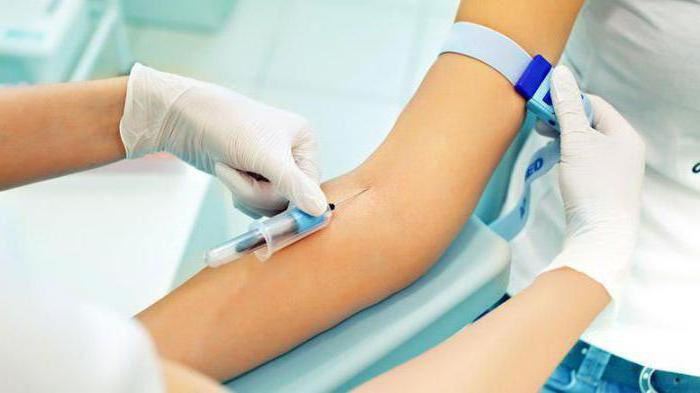How to become a Certified Phlebotomist: Step-by-Step Guide to Launch Your Healthcare Career
Are you interested in starting a rewarding career in healthcare? Becoming a certified phlebotomist is an excellent choice for those who want to help others through blood collection and diagnostic testing. This comprehensive guide will walk you through teh essential steps to become a certified phlebotomist, offering valuable insights into certification requirements, training options, practical tips, and career benefits.Let’s dive into this exciting profession within the healthcare industry!
Introduction
Phlebotomists play a crucial role in the medical field, acting as the frontline in patient care and diagnosis. With the demand for healthcare professionals rising, especially in clinical laboratories, hospitals, and outpatient clinics, becoming a certified phlebotomist offers fantastic employment opportunities, competitive salaries, and personal satisfaction from helping patients. Whether your a recent graduate or considering a career change, understanding the pathway to certification is the first step toward launching your healthcare career as a professional phlebotomist.
Understanding the Role of a Certified Phlebotomist
A certified phlebotomist specializes in drawing blood from patients for tests, transfusions, donations, or research. They work closely with healthcare providers to ensure the safe and efficient collection of blood specimens, adhering to strict safety and hygiene protocols.Certification ensures you possess the necessary skills,knowledge,and professionalism to excel in this vital healthcare role.
Prerequisites and Entry Requirements for Aspiring Phlebotomists
Before embarking on your journey to become a certified phlebotomist,it’s essential to meet specific prerequisites:
- Minimum age: Usually 18 years or older
- High school diploma or GED equivalent
- Clear background check and drug screening
- Basic knowledge of medical terminology and anatomy (helpful but learnable during training)
Step 1: Choose a Certified Phlebotomy Training Program
The first concrete step toward certification involves enrolling in a reputable phlebotomy training program. These can be offered through vocational schools, community colleges, hospitals, or online platforms.
Types of Training Programs
- Certificate Programs: Usually 4-12 weeks, focusing on theoretical knowledge and practical skills.
- Diploma Programs: May include broader healthcare topics, taking about 6 months.
- Online Courses: Flexible options combining online instruction with hands-on clinical practice.
What to Look for in a Training Program
- Accreditation by recognized bodies such as the National Accrediting Agency for Clinical Laboratory Sciences (NAACLS)
- Hands-on practical training with real patients
- Experienced instructors with healthcare backgrounds
- Readiness for certification exams
Step 2: Complete Your Phlebotomy Training and Gain Practical Experience
Successfully completing your training program is essential. During this phase, you will learn key skills, including:
- Venipuncture techniques
- Patient identification and communication
- Proper handling and labeling of samples
- Safety protocols and infection control
Most programs also require clinical practice, where you’ll perform blood draws under supervision, building your confidence and competence.
Step 3: Obtain Certification as a Phlebotomist
Certification is a vital credential that demonstrates your proficiency and commitment to the profession. Hear are the most recognized certifying agencies:
Top Phlebotomy Certification Agencies
| Certification Body | Requirements | Exam Details |
|---|---|---|
| National Phlebotomy Association (NPA) | Completed approved training + clinical hours | multiple-choice exam |
| American Society for Clinical Pathology (ASCP) | Certified or training hours + clinical experience | Certification exam |
| National Healthcareer Association (NHA) | Approved training + clinical hours | Computer-based exam |
Steps to Certification
- Meet the eligibility criteria
- Apply online or via paper application
- schedule and pass the certification exam
- Receive your certification credential
Step 4: Maintain and Advance Your Certification
most certification agencies require periodic renewal, which involves continuing education and paying renewal fees. Staying certified ensures you keep up with the latest practices and enhances your employability.
Consider specialization areas, such as pediatric phlebotomy or hazardous blood draws, to advance your career and increase earning potential.
Benefits of Certification and a Career as a Phlebotomist
- Enhanced credibility and job prospects
- Higher salary potential
- Opportunity for career advancement in healthcare
- Vital role in patient diagnosis and care
- Employment in diverse settings like hospitals, clinics, and labs
Practical Tips for Aspiring Phlebotomists
- Choose an accredited training program to ensure quality education.
- Practice your venipuncture skills regularly to become confident.
- Develop strong communication skills to handle patients comfortably.
- Stay updated with the latest safety and infection control protocols.
- Network with healthcare professionals and join relevant organizations.
Case Study: From Student to Certified Phlebotomist
jane, a recent high school graduate, enrolled in a certified phlebotomy training program at her local community college. After completing her coursework and clinical hours,she successfully passed the certification exam through the NHA. Within six months, Jane secured a job at a busy outpatient clinic, earning a competitive salary and gaining valuable experience. Her dedication and certification opened doors to further healthcare training opportunities,paving her path to a fulfilling healthcare career.
first-Hand Experience: A day in the Life of a Certified Phlebotomist
As a certified phlebotomist, your daily routine includes preparing patients for blood draws, ensuring accurate sample collection, maintaining safety standards, and documenting procedures. Building rapport with patients, especially those anxious or fearful, is key to a successful blood draw. Practical experience gained during training is invaluable for handling real-world scenarios confidently.
Conclusion
Becoming a certified phlebotomist is an attainable and rewarding goal for anyone interested in healthcare. By choosing the right training program, gaining practical experience, and securing certification, you set yourself up for a successful career in medical diagnostics and patient care. With steady demand and opportunities for advancement, a career as a certified phlebotomist can be both financially stable and personally fulfilling. Take the first step today and begin your journey toward a well-respected position in the healthcare industry!
